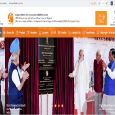
In every workplace people talk about the ‘organisational culture’. That mysterious phrase which characterises the qualities of a work environment. From my 18 years’ experience in executive hire, a key area of assessment is to explore whether the executive is a good cultural fit to a business’s cultural environment. However, it can often prove difficult to screen for something as nebulous as ‘cultural fit’.
The culture of a technical or manufacturing organisation can vary. I have found hiring at senior/executive levels, there is a need to conduct interviews across the chain, with employers and employees to truly find out more about an organisation and its workforce. There are several strategies I have fostered in order to ensure Redline Executive places the right executive for the right organisation.
Gauge the candidate’s fit
Redline Executive make use of psychometric profiling tools to assist in guaging a candidate’s fit. These tools are a more scientific way to qualify something that is in reality, immeasurable. Having the experience of working with candidates from different levels of the technical arena, it is still challenging to distinguish the difference between a candidate’s genuine personality traits and a candidate’s ‘interview performance’.
Sourcing ‘culturally fit’ candidates
At Redline Executive we have developed a series of questions that better enable a candidate to frame the context of the kind of cultural environment that maximises their potential for success. A desire to advance in the hiring process can sometimes cause candidate to try and appear to be an ‘everyman’, capable of adapting to and morphing into any environment. The overwhelming weight of evidence demonstrates that the better the natural cultural fit – the better the results.
We use the basic theory of Competency Based Interviewing (CBI) to establish scenarios where candidates have maximised their impact on a business and then seek to establish what it was about the cultural environment that enabled them to achieve that impact.
Articulating culture to be tangible
Defining culture can be a surprisingly slippery concept and when the question is posed as directly as “tell me about your company culture” the client often sits and stares into the middle distance in the hope that some clever adjectives appear. Despite it being a very real thing, clients do not spend a lot of time thinking about their own company culture.
Culture can be company-wide and all pervasive or it can change beyond recognition from one department to the next or from one month to the next. Culture can be the result of a concerted and intended drive and style to achieve a certain cultural climate. Equally culture can be the unintended consequence of how a client goes about its business with little pre-emptive thought about the effect on the business.
Rather than ask an entirely open question, I have found it productive to explore how a current company culture varies relative to another company and to offer some scenarios around how given situation might be viewed or handled. It’s a balanced process of being careful not to lead a client to an answer but to help them articulate their culture in a way that is tangible.
[Source:- Recruitmentbuzz]




